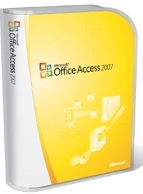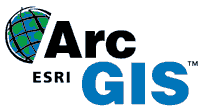Vous avez des logiciels à suggérer pour cette section? Écrivez à votre professionnel de recherche préféré!
CEF-Reference - Software
An inventory of software and associated Web site resources, which is recommended by researchers and professionals with the CEF.
CEF-Reference page | Books | Articles | Other web resources
Genomics
Sequencher ![]() - Sequencher 4.7 (2004) is software for complete DNA sequence analysis for Macintosh and Windows operating systems. Despite its high price (about $2500), Sequencher is powerful and easy to use. It offers several editing options as well as the ability to import many reference sequences from Genbank
- Sequencher 4.7 (2004) is software for complete DNA sequence analysis for Macintosh and Windows operating systems. Despite its high price (about $2500), Sequencher is powerful and easy to use. It offers several editing options as well as the ability to import many reference sequences from Genbank ![]() . (AG)
. (AG)
Datebase management
Access
Microsoft Access ![]() - By far the most widely used data base management system in the world.
- By far the most widely used data base management system in the world.
Strong points:
- Very simple to install and does not require complex configuration.
- Inter-operability: Since all the data are stored in only one file, it is very simple to distribute a database assembled with Access. This is generally not the case with other systems.
- Simplicity in creating forms and applications (with VB).
Weak points:
- Does not support "triggers" and procedures.
- Reacts badly in environments with several users. Its use should be limited to small databases.
Access resources on the web
Others
MySQL ![]() - Impossible to avoid for people wishing to develop databases using OpenSource software. All documentation as well as the downloadable products can be found on the site. (DL)
- Impossible to avoid for people wishing to develop databases using OpenSource software. All documentation as well as the downloadable products can be found on the site. (DL)
Spatial information
Geographic Information Systems
ArcGIS ![]() - ArcGIS 9.2 is the new generation of geographic information systems from ESRI (after Arc/INFO and ArcView). By far one of the most complete GIS packages on the market, ArcGIS is an essential research tool in university laboratories and governmental agencies. It is the most widely used GIS software after MapInfo. ArcGIS comes with a module for file management (ArcCatalog), a module for chart editing(ArcMap), a module for geoprocessing (ArcToolBox), a module for 3D visualisation (ArcScene) and a free viewer (ArcReader).
- ArcGIS 9.2 is the new generation of geographic information systems from ESRI (after Arc/INFO and ArcView). By far one of the most complete GIS packages on the market, ArcGIS is an essential research tool in university laboratories and governmental agencies. It is the most widely used GIS software after MapInfo. ArcGIS comes with a module for file management (ArcCatalog), a module for chart editing(ArcMap), a module for geoprocessing (ArcToolBox), a module for 3D visualisation (ArcScene) and a free viewer (ArcReader).
Its strong points are:
- File Standards: the shape format (invented by ESRI) is the most widely used vectorial format for geographical information. The new geodatabase format, which replaces the coverage format, offers a much greater possibility of expression for modelling.
- Data conversion: ArcGIS includes many very powerful tools for handling geographical objects.
Its weak points are:
- Pseudo SQL: Unlike MapInfo, ArcGIS supports only the WHERE function of SQL. It is not possible to make complex requests with GROUP BY, either on several tables or by including only some fields.
- Separation of geometrical operations at the editing interface: The tools of geoprocessing are not very well integrated into the chart editing interface (ArcMap).
- Its price: The ArcMap module costs approximately $2000 and the complete suite (with the extensions), up to $20,000.
For students at UQAM, the university possesses an institutional license for the ArcGIS suite. For the program to function, your computer (laptop or desktop) must be connected to the UQAM network. To obtain a license, contact Luc Lauzon or Mélanie Desrochers.
ArcGIS Resources on the web
- ArcGIS in Wikipedia

- Forum ArcGIS
 - The official forum for ArcGIS support at ESRI. For use in posing the most direct questions. (PR)
- The official forum for ArcGIS support at ESRI. For use in posing the most direct questions. (PR)
- Extension and GeoWizards and GeoTools
 - Two almost-free extensions that simplify conversions of shapefiles from points in lines, from the lines in polygons, and which allow the calculation of areas, perimeters, etc. These extensions can save alot of time!!! However, remember that the free versions are limited in the number of data which they can treat. (SB)
- Two almost-free extensions that simplify conversions of shapefiles from points in lines, from the lines in polygons, and which allow the calculation of areas, perimeters, etc. These extensions can save alot of time!!! However, remember that the free versions are limited in the number of data which they can treat. (SB)
- Hawths analysis tools
 - This extension permits calculations linked to animal locations. It is free and very useful. However, it does not support differences in projections; if you have several shapefiles posted in different projections, you will have to convert them so that they all are visible in a common form. (SB)
- This extension permits calculations linked to animal locations. It is free and very useful. However, it does not support differences in projections; if you have several shapefiles posted in different projections, you will have to convert them so that they all are visible in a common form. (SB)
- Jenness Enterprises
 - This company has developed a number of extensions for ArcView from its inception and continues to develop others for ArcGis. Almost all these extensions are free and not limited. (SB)
- This company has developed a number of extensions for ArcView from its inception and continues to develop others for ArcGis. Almost all these extensions are free and not limited. (SB)
- Xtools Pro
 - This extension is partially free (in its demo version), and gives you access to functionalities not provided by other extensions (go to the site, where they are listed under the Tools pulldown menu). The 30-day test version allows you access to all the functionalities, but afterwards only some functions will remain active. (SB)
- This extension is partially free (in its demo version), and gives you access to functionalities not provided by other extensions (go to the site, where they are listed under the Tools pulldown menu). The 30-day test version allows you access to all the functionalities, but afterwards only some functions will remain active. (SB)
ArcView ![]() - ArcView 3.2 (1999) and 3.3 (2002) are the much cheaper versions (approximately $2000) of ArcInfo, and comparable to MapInfo. Although ArcView is certainly outmoded by today's standards (e.g., no reprojection on the fly, primitive interface, etc.), it is still used a great deal. Many very useful programs were developed for ArcView with the language Avenue. As ArcGIS no longer supports Avenue, these programs do not necessarily have an equivalent in the latest version and thus will not function.
- ArcView 3.2 (1999) and 3.3 (2002) are the much cheaper versions (approximately $2000) of ArcInfo, and comparable to MapInfo. Although ArcView is certainly outmoded by today's standards (e.g., no reprojection on the fly, primitive interface, etc.), it is still used a great deal. Many very useful programs were developed for ArcView with the language Avenue. As ArcGIS no longer supports Avenue, these programs do not necessarily have an equivalent in the latest version and thus will not function.
ArcView is also the name of the basic license for ArcGIS, which is worth about the same price as the older program.
ArcView Resources on the web
- ArcView in Wikipedia

- Jenness Enterprises
 - This company has developed a number of extensions for ArcView from its inception and continues to develope others for ArcGis. Almost all these extensions are free and not limited. (SB)
- This company has developed a number of extensions for ArcView from its inception and continues to develope others for ArcGis. Almost all these extensions are free and not limited. (SB)
Others
DNR Garmin ![]() - This small program allows you to download Garmin GPS data to a shapefile (ArcGIS) or upload data to the GPS. Garmin DNR user's guide
- This small program allows you to download Garmin GPS data to a shapefile (ArcGIS) or upload data to the GPS. Garmin DNR user's guide ![]() See chapter 9: Transferring data. (MD)
See chapter 9: Transferring data. (MD)
Comparative table of Geoprocessing functions ![]() - This table makes it possible to compare ' ' Overlay' ' and ' ' Extract' ' functions of ArcGIS 9, including Intersect, Union, SymDiff, Clip, Erase, Identity and Update. (MD)
- This table makes it possible to compare ' ' Overlay' ' and ' ' Extract' ' functions of ArcGIS 9, including Intersect, Union, SymDiff, Clip, Erase, Identity and Update. (MD)
Software for conversion between geographic coordinates (lat/long) and UTM ![]() - Here is a tool developed By Natural Resources Canada (to download or to use on-line) that converts UTM coordinates to geographic coordinates (degrees, minutes, seconds or decimal degrees) and vice-versa. The application to be downloaded is a little ugly (DOS interface), but once you have played with it a bit, you will find that it works well. (Comments sent by L.-D. Aubin-Fournier to MM)
- Here is a tool developed By Natural Resources Canada (to download or to use on-line) that converts UTM coordinates to geographic coordinates (degrees, minutes, seconds or decimal degrees) and vice-versa. The application to be downloaded is a little ugly (DOS interface), but once you have played with it a bit, you will find that it works well. (Comments sent by L.-D. Aubin-Fournier to MM)
Tools for correcting French language text
Antidote RX ![]() - Antidote Rx(2006), from the Quebec data-processing firm Druide, is the latest update ($69) in the Antidote series. This popular software for correcting French language text continues to capture a greater and greater share of the market. To my knowledge, there is no better program for the task. For a given word, it is possible to search in Antidote for a list of synonyms or antonyms, for phrases containing that word, for analogies, for its anagrams, or for words from the same family. With Antidote you can discover numerous quotations containing that word, together with its complete conjugation, all the while appreciating the intelligent interaction between all these components. With its incomparable richness, its intuitive interface and its amazing speed, Antidote pushes the limits of French dictionaries. Antidote Rx can be installed on both Macintosh PowerPC- and INTEL-based systems, and under Windows and Linux, on machines with 64-bit processors. Attention, Antidote was not created to automatically rewrite your manuscript; rather, it provides you with all of the tools necessary to do a better job in composing text in the first place. (AG)
- Antidote Rx(2006), from the Quebec data-processing firm Druide, is the latest update ($69) in the Antidote series. This popular software for correcting French language text continues to capture a greater and greater share of the market. To my knowledge, there is no better program for the task. For a given word, it is possible to search in Antidote for a list of synonyms or antonyms, for phrases containing that word, for analogies, for its anagrams, or for words from the same family. With Antidote you can discover numerous quotations containing that word, together with its complete conjugation, all the while appreciating the intelligent interaction between all these components. With its incomparable richness, its intuitive interface and its amazing speed, Antidote pushes the limits of French dictionaries. Antidote Rx can be installed on both Macintosh PowerPC- and INTEL-based systems, and under Windows and Linux, on machines with 64-bit processors. Attention, Antidote was not created to automatically rewrite your manuscript; rather, it provides you with all of the tools necessary to do a better job in composing text in the first place. (AG)
Antidote Resources on the web
Statistics
General statistics
Its strong points:
- Great flexibility in programming that allows the implementation of many statistical analyses and matrix operations
- An impressive number of functions for mathematical operations or for less conventional types of analyses is freely available
- Freeware
- Free upgrades
- Several technical books and documents for using the software are available
- High quality and flexible graphics
Its weak points:
- A good working knowledge of the R language is required to effectively use the program
- Absence of a GUI (graphical user interface) for the base version of the program
R Resources on the web
- R in Wikipedia

- Tinn-R
 - This little editor allows you to optimise the use of R, in that it recognises R syntax, provides a possible list of arguments for each function invoked, and makes it possible to directly send script to R (instead of copy and paste into the command window). Note that the editor also recognizes several other languages, including C, C+, C++, HTML, XML, TeX, and JAVA. An indispensable tool for users of R. To avoid having to reconfigure R, I recommend version 1.17.2.4. (MM)
- This little editor allows you to optimise the use of R, in that it recognises R syntax, provides a possible list of arguments for each function invoked, and makes it possible to directly send script to R (instead of copy and paste into the command window). Note that the editor also recognizes several other languages, including C, C+, C++, HTML, XML, TeX, and JAVA. An indispensable tool for users of R. To avoid having to reconfigure R, I recommend version 1.17.2.4. (MM)
- The Comprehensive R Archive Network
 - One can download the most recent version of R from here as well as numerous documents. (MM)
- One can download the most recent version of R from here as well as numerous documents. (MM)
- R Tips
 - An amalgam of simple tricks and tips to function in R. (MM)
- An amalgam of simple tricks and tips to function in R. (MM)
- R Graph Gallery
 - One can find here an assortment of codes necessary for producing a great variety of graphics in R. (MM)
- One can find here an assortment of codes necessary for producing a great variety of graphics in R. (MM)
- R Site Search
 - This practical site makes it possible for you to search files in the R-Help list. (MM)
- This practical site makes it possible for you to search files in the R-Help list. (MM)
Its strong points:
- Great flexibility in programming to implement numerous statistical analyses and matrix operations
- Macros are available to implement these operations as well as less conventional types of analyses
- Several technical books and documents are available regarding the use of this program
Its weak points:
- No GUI (graphical user interface)
- A good understanding of the SAS language is necessary
- High cost of the initial purchase
- Cost of the annual license
- Cost of updates and additional modules
(Note: many universities pay for an annual license, which enables them to offer SAS free of charge to their research personnel and students)
SAS Resources on the web
- SAS in Wikipedia

- Karl Wuensch's SAS Programs Page
 - One can find several practical programs on the web site of this psychology professor from East Carolina University. (MM)
- One can find several practical programs on the web site of this psychology professor from East Carolina University. (MM)
- SAS code taken from SAS books
 - This site provides numerous data files and code used in a very great number of books that illustrate the use of SAS software. Strongly recommended to whomever wants to reproduce the analyses appearing in SAS publications with the goal of better understanding SAS syntax and its application. (MM)
- This site provides numerous data files and code used in a very great number of books that illustrate the use of SAS software. Strongly recommended to whomever wants to reproduce the analyses appearing in SAS publications with the goal of better understanding SAS syntax and its application. (MM)
- SAS code and tips from York University
 - You will find many practical resources here regarding programming in SAS that are as useful to more advanced users as they are to the neophyte user. (MM)
- You will find many practical resources here regarding programming in SAS that are as useful to more advanced users as they are to the neophyte user. (MM)
- SAS code and tips from UCLA
 - This site is rich in SAS code, documents, macros, and practical advice to whomever wishes to optimize their use of SAS/STAT software. (MM)
- This site is rich in SAS code, documents, macros, and practical advice to whomever wishes to optimize their use of SAS/STAT software. (MM)
JMP is constructed to help users in choosing statistical methods appropriate for their data. This advantage is seldom offered by a statistical analysis software, but can also prove to be a double-edged sword if the user is not familiar with the suggested methods or who does not have access to statistical support. JMP Genomics ![]() is a module specialised for the analyses of geomic data.
is a module specialised for the analyses of geomic data.
JMP Resources on the web
SPSS ![]() - With this programme developed originally by SPSS Inc.
- With this programme developed originally by SPSS Inc. ![]() for the social sciences, the user can implement many conventional analyses with the aid of Windows menus and sub-menus.
for the social sciences, the user can implement many conventional analyses with the aid of Windows menus and sub-menus.
Its strong points:
- Easy-to-use and adequate generic software for many conventional problems
- Good graphical interface
- Friendly
Its weak points:
- Limit to the types of analyses possible with this software
- Many non-conventional types of analyses are not available
- Low initial purchase cost, but extra costs incurred with upgrades and additions
SPSS Resources on the web
- SPSS in Wikipedia

- SPSS tools
 - One can find many resources here, including an impressive number of tips regarding syntax, macros, and scripts for the users of SPSS. (MM)
- One can find many resources here, including an impressive number of tips regarding syntax, macros, and scripts for the users of SPSS. (MM)
Models incorporating the probability of detection
DISTANCE ![]() - This software makes it possible to estimate the probability of detection and the abundance of animals starting with data collected under a distance sampling design. It is available free on the site.
- This software makes it possible to estimate the probability of detection and the abundance of animals starting with data collected under a distance sampling design. It is available free on the site.
Its strong points:
- Allows you to estimate abundance after taking the probability of detection into account
- Allows you to use particular models when certain assumptions cannot be met (i.e., imperfect detection at distance 0)
- Good Windows graphical interface
Note that certain types of analyses, for example, mark-recapture distance sampling, require installation of R, because this analysis is carried out using a library of R functions, after which results are imported into DISTANCE.
Its strong points:
- MARK is user-friendly software (with Windows menus), in which one can use menus and sub-menus
- MARK supports a great variety of capture-mark-recapture models
- You can use design matrices for even greater flexibility
- Allows you to simulate data starting with the values of the estimated parameters
Its weak points:
- MARK requires large amounts of memory and thus it is necessary to keep the number of open windows in Windows to a minimum; otherwise, the program can become unstable
- Requires a good working knowledge of capture-mark-recapture models to avoid errors in modelling
- Requires a large screen when one has very large design matrices
MARK Resources on the web
- www.phidot.org
 - One can find several resources on this site, including the excellent of "Program MARK: A gentle introduction ", which should prove to be an indispensable document for whomever wishes to use the MARK program. One can also access a very useful forum for questions regarding capture-mark-recapture analysis. (MM)
- One can find several resources on this site, including the excellent of "Program MARK: A gentle introduction ", which should prove to be an indispensable document for whomever wishes to use the MARK program. One can also access a very useful forum for questions regarding capture-mark-recapture analysis. (MM)
PRESENCE ![]() - This little program was developed specifically for the site occupancy analyses over one or more seasons. It is freely available from the web site.
- This little program was developed specifically for the site occupancy analyses over one or more seasons. It is freely available from the web site.
Its strong points:
- Allows you to model presence/absence analyses, taking into account the probability of detection
- Allows you to simulate site occupancy data, using the initial starting values of the parameters
Its weak points:
- This software can sometimes be unstable and you are advised to regularly save output
- The functionality of Windows is not completely supported by PRESENCE
SURVIV ![]() - This extremely, general-purpose software, which is the precursor to MARK, is still being used today for a multitude of capture-mark-recapture analysis. It can be freely downloaded from the site.
- This extremely, general-purpose software, which is the precursor to MARK, is still being used today for a multitude of capture-mark-recapture analysis. It can be freely downloaded from the site.
Its strong points:
- Sa grande flexibilité en fait encore un logiciel utilisé aujourd'hui
- Certaines analyses ne peuvent être effectuées qu'avec ce logiciel
Its weak points:
- DOS and FORTRAN environment
- A very good understanding of programming and the theory behind capture-mark-recapture models is necessary
- Not advised for neophytes to the subject
Other sites where one can obtain software incorporating the probability of détection
- Patuxent Software Archive
 - From this site, one can download a variety of software, many which were developed by Jim Hines of the Patuxent Wildlife Research Center, that allow you to estimate of the probability of detection rising from capture-mark-recapture techniques. (MM)
- From this site, one can download a variety of software, many which were developed by Jim Hines of the Patuxent Wildlife Research Center, that allow you to estimate of the probability of detection rising from capture-mark-recapture techniques. (MM)
- CNRS Montpellier
 - From this site, one can download capture-mark-recapture software (M-SURGE) as well as software that allows you to test the goodness-of-fit of survival and multi-stage models. (MM)
- From this site, one can download capture-mark-recapture software (M-SURGE) as well as software that allows you to test the goodness-of-fit of survival and multi-stage models. (MM)
Multivariate Analyses
Interested users should note that versions prior to 4.5 are not very flexible with respect to data importation from other programs and that graphical presentation with Canodraw is very limited.
Since 2004, this freeware has been available under R for Mac, Windows, Linux and Unix systems. The old, non-R version of the software (ADE-4) for Windows and Mac is also available here ![]() , but it has not been maintained since 2004. (BP)
, but it has not been maintained since 2004. (BP)
When calculating similarities among samples, you have a large selection of indices from which to choose, or the option of using euclidean distance. The programs are ideally used with data sets that contain many variables and few cases (she includes Program PCO, a permutation-based program for obtaining a principal coordinates solution), and for data that are not likely to conform to either multivariate or univariate assumptions of normality and homogeneity of variance among treatments. With respect to the latter assumption, she has written programs for evaluating multivariate homoskedasticity using PERMDISP and PERMDISP2 (multivariate extensions of Levene's test). (BP)
(BP)
EQS (structural equation modelling) http://www.mvsoft.com ![]() (BS)
(BS)
(BP)
<< Articles | PagesReference | Autres ressources web >>


















